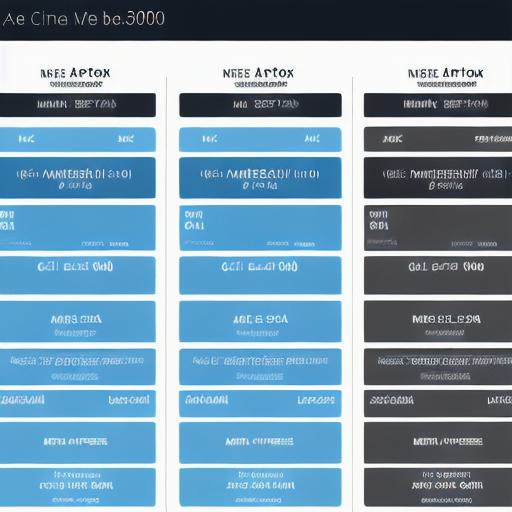Web 3.0 vs Web3: Understanding the Key Differences

As the world continues to shift towards a more decentralized and open internet, there has been a lot of talk about the next evolution of the web – Web 3.0. But what exactly does it mean, and how does it differ from the current iteration of the web? In this article, we’ll explore the key differences between Web 3.0 and Web3 to help you understand which one is right for your needs.
Web 3.0 vs Web3: A Comparison
At its core, Web 3.0 is all about decentralization, openness, and interoperability. It’s a vision for the web that puts users in control of their data and gives them the ability to participate in decentralized applications (dApps) without relying on centralized authorities. This makes it possible to create more secure, private, and efficient systems that are not controlled by big tech companies.
Web3, on the other hand, is a term used to describe various projects and initiatives that are working towards this same goal. While there is no single definition of Web3, it generally refers to decentralized applications and platforms that use blockchain technology to enable secure, transparent, and trustless transactions.
One key difference between Web 3.0 and Web3 is the level of decentralization. While Web 3.0 is a broad vision for the web that emphasizes decentralization and interoperability, Web3 refers to specific projects and platforms that are already building decentralized applications. This means that Web3 projects may be more focused on specific use cases or industries, while Web 3.0 is a more general concept that encompasses a wide range of possibilities.
Another key difference is the level of openness. Web 3.0 is all about creating an open and interoperable web that allows users to easily share data and resources across different platforms and applications. This means that Web 3.0 projects are designed to be open and inclusive, with a focus on building communities and ecosystems that can support a wide range of use cases.
Web3 projects, on the other hand, may be more focused on specific use cases or industries, and may not necessarily prioritize openness or interoperability in the same way as Web 3.0. This means that Web3 projects may be more siloed and less interoperable with each other, which can make it harder for users to share data and resources across different platforms.
Case Studies: Real-Life Examples of Web 3.0 and Web3 in Action
To help illustrate the key differences between Web 3.0 and Web3, let’s take a look at some real-life examples of both.
Web 3.0: Decentralized Social Networks
One example of Web 3.0 in action is decentralized social networks like Mastodon and Mindspace. These platforms are designed to be more secure, private, and user-controlled than traditional social networks like Facebook and Twitter. By using blockchain technology to enable secure, transparent, and trustless transactions, these platforms give users greater control over their data and allow them to participate in decentralized communities without relying on centralized authorities.
Web3: Decentralized Marketplaces
Another example of Web3 in action is decentralized marketplaces like OpenSea and Rarible. These platforms use blockchain technology to enable secure, transparent, and trustless transactions for digital assets like NFTs (non-fungible tokens). By using smart contracts and other decentralized technologies, these platforms allow creators to sell their work directly to buyers without relying on intermediaries like marketplaces or galleries.
FAQs: Answering Common Questions About Web 3.0 and Web3
What is the difference between Web 3.0 and Web3?
Web 3.0 is a broad vision for the web that emphasizes decentralization, openness, and interoperability. Web3 refers to specific projects and initiatives that are working towards this same goal, including decentralized applications and platforms that use blockchain technology to enable secure, transparent, and trustless transactions.
What are some examples of Web 3.0 in action?

Web 3.0 projects include decentralized social networks like Mastodon and Mindspace, as well as decentralized marketplaces like OpenSea and Rarible. These platforms use blockchain technology to enable secure, transparent, and trustless transactions for digital assets like NFTs.
What are some examples of Web3 in action?
Web3 projects include decentralized applications and platforms that use blockchain technology to enable secure, transparent, and trustless transactions. Some examples include decentralized social networks like Mastodon and Mindspace, as well as decentralized marketplaces like OpenSea and Rarible.








